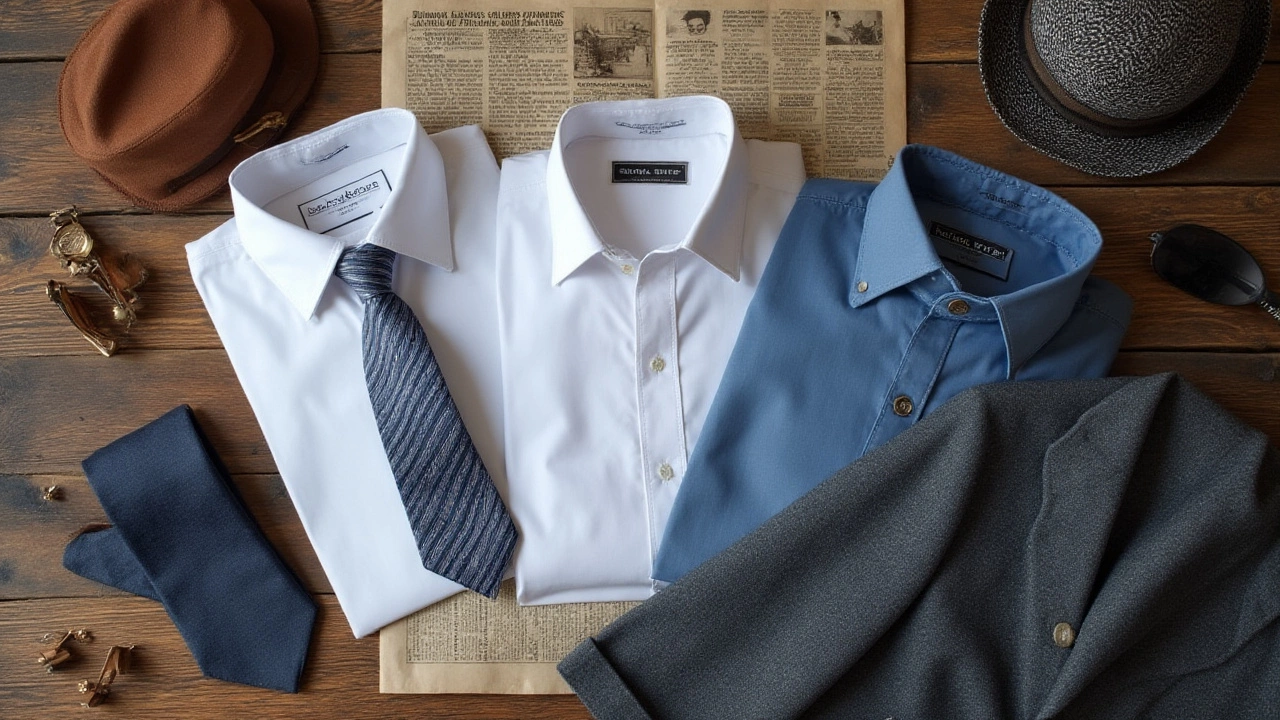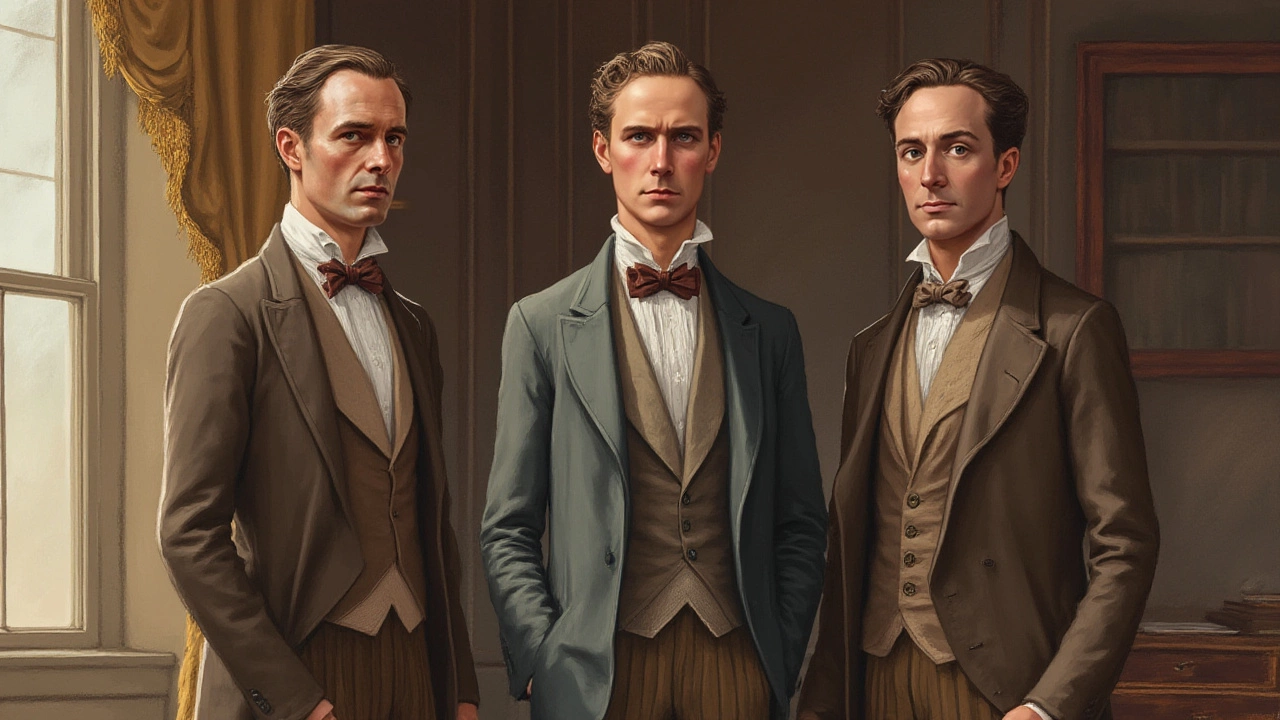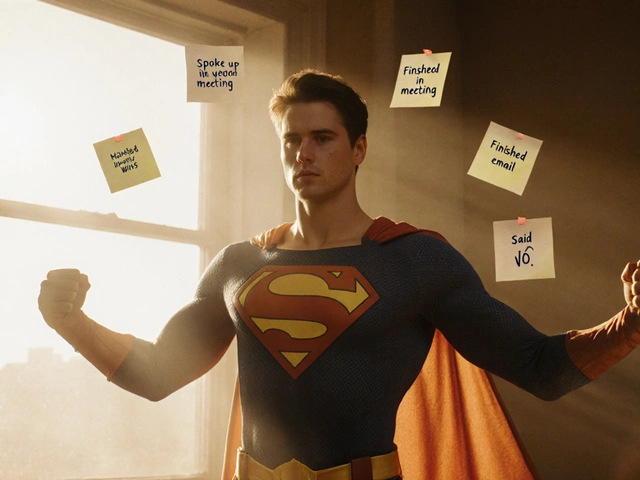Stop and consider this: the success of a classic British look often hangs on one tiny detail—a shirt collar. It sounds simple, but this small patch of fabric can put your style in a completely different league. In Britain’s quirky world of etiquette and tailoring, collar shapes are anything but random. Choose the right one, and you’ll look sharp at your cousin’s wedding, a high-pressure job interview, or even at a pint in your local. Pick wrong, and you’ll stick out like a tourist at the Henley Regatta. These aren’t just old habits; each collar developed a backstory shaped by class, seasons, and ever-changing British tastes. Get this detail right, and you might just feel as dapper as James Bond on a Friday night.
The Foundations: Classic British Shirt Collar Styles
The UK takes its shirt collars as seriously as its scones and tea. For most people, the spread collar jumps to mind first—and for good reason. This versatile staple, also called the Windsor or cutaway, first gained pace with the Duke of Windsor, a former king with a taste for wider knots. It’s all about balance: the distance between the collar points makes space for a meatier Windsor knot in your tie, but it doesn’t go totally wild. Pulling off a spread means your tie looks strong, not squashed, yet you can also style it open-necked at the weekend without looking out-of-place.
Then there’s the point collar, sometimes called the straight collar. It’s the quiet hero of the working world. The points sit closer together, drawing the eye down and giving a sharper, more streamlined face. This collar has powered countless deals in City offices and looked right at home under a V-neck jumper on colder Leeds mornings. It’s for someone who likes a little discipline in their look—a safe bet for the man who doesn’t want his shirts shouting for attention at the pub.
For a more relaxed day, go for the button-down collar. Funny thing—Americans will tell you it’s their invention, but it’s got British roots at Brooks Brothers, originally designed to stop polo players’ collars flapping in the wind. Rugby players in Oxford adopted it too; now, it’s an off-duty masterpiece. The buttons anchor the collar, making it a sportier, less formal choice, perfect with jeans or chinos. Still, you’ll see it in boardrooms because some chaps just love its unfussy charm.
But the club collar—sometimes called the Eton or round collar—really makes a statement. Picture the rounded tips that look like they belong on an Edwardian schoolboy: they actually started as part of Eton College’s uniform, designed to set its scholars apart. Try this one and you’ll stand out among a sea of pointed collars, especially if you fasten it up with a collar pin or bar. Just don’t expect many high-street shops to stock it; you’re best off at a bespoke tailor.
White-collar crime? Not exactly. But the white-collar shirt was once a literal hallmark of the British elite. Some shirts had separate detachable collars because laundry was expensive—why wash the whole shirt if you could just change the collar? Stiff semi-detached collars still appear in old photos of barristers, bankers, and university dons. British shirt collars have always been about presenting the right face to the world—from cricket fields to coronation halls.

Collar Construction: What Sets British Shirts Apart?
Look at a British shirt collar and you’ll notice it feels... different. It’s not just nostalgia talking—there’s real craft underneath that neat line at your neck. Traditional British makers use a variety of materials inside the collar, called interlinings, to control stiffness. Some brands, like Turnbull & Asser or Emma Willis, use fused (glued) or sewn-in (floating) interlinings, depending on how crisp the collar needs to be. Floating versions are comfier and more expensive; they shape to your neck and last longer, but need proper ironing. Fused collars, meanwhile, keep their snap for longer and are easier on the pocket.
Buttonholes, edge stitching, and collar stays (the removable strips you can slide in to stop curling) are tiny details that matter. Savile Row shirts, for instance, often have carefully hand-sewn buttonholes and mother-of-pearl buttons, which don’t crack in the wash. These details might sound petty, but over a year of coffee-fuelled meetings, you’ll notice when a cheap collar starts sagging or fraying.
Take note of the collar band—the part hidden under the collar itself. British shirts usually have a slightly higher band than their Italian rivals. A tall band gives a more formal, upright look, which frames the tie knot and works with traditional tailoring. Shops like Charles Tyrwhitt and Hawes & Curtis have pushed this design, and it’s stuck because it gives a real "English gent" flair, even when your tie’s swapped for an open button after work.
Climate has played a role, too. In earlier years, stiffer, heavier collars helped people look decent even when woolly suits got hot and sticky. Now, blends with Egyptian cotton or fine poplin make collars soft yet durable, so they’ll survive a Leeds summer commute (rain, sun, repeat) without turning limp by lunchtime.
Want to geek out on numbers? Here’s a little comparison between popular British shirt collar styles; see how their measurements can change your whole look:
| Collar Style | Spread (cm) | Collar Point Length (cm) | Ideal Occasion |
|---|---|---|---|
| Spread Collar | 7-9 | 7.5-9 | Business/Formal |
| Point Collar | 5-7 | 7-9 | Business/Casual |
| Club/Eton Collar | 5-6 | 6-7.5 | Formal/Statement |
| Button-Down | 6-8 | 6.5-8.5 | Casual |
None of this gets taught in school, but knowing these details means you’ll actually enjoy shopping for shirts. If the collar rubs your neck, feels floppy after two wears, or makes your face look moon-shaped, it’s not the right pick. The best ones lift your face and flatter your style—a trick every sharp British dresser has figured out.

Style Tips: Matching Collars to Your Look and Personality
Even the best shirt can fall flat if the collar doesn’t match the rest of your look—or your mood, for that matter. So, how do you choose? Think about your face shape first. A spread collar works wonders on narrow or oval faces, broadening the space and giving a solid frame to your features. If your face is rounder, a point collar with closer tips will balance things out, slimming your profile. Easy trick to remember: point collars point down, and so does your chin—helpful if you want to look less moon-faced in family photos.
The width of your tie knot matters, too. Thicker ties with hefty knots like the Windsor pair best with wide-spread collars—don’t squeeze a big knot into a tiny point collar unless you want the look of a stressed-out library assistant at exam time. If you’re skipping the tie, softer button-down collars and club collars play well with a casual blazer or jumper—no one’s fooled, but it still looks sharp.
Think about the vibe of the day. Headed to a formal function? Stick to the spread or club collar—add a tie bar or pin for extra polish. Working from the office via your kitchen table? A button-down collar won’t scream "I overslept." And if you want to stand out (without being over the top), look for contrast or detachable collars—tab collars, for example, fasten under the tie to give the knot a neat lift. You’ll seem like a man who knows his stuff.
Let’s bust a myth: stiff white collars aren’t just for period dramas or judges. Try a detachable collar for a black-tie party; you’ll have people asking where you get your shirts tailored. And yes, women’s shirts have joined the tradition—point collars and even rounded club collars look just as crisp under a tailored suit or simple cardi.
Got a collar that tends to curl up? Use collar stays—the removable strips you slot inside. Metal ones keep their shape longer than plastic. If the collar starts warping after several washes, it might be time to try a sturdier brand or even go bespoke. Some folks in Leeds swear by local shirtmakers who’ll customize the collar height and spread just for your neck and shoulder shape. Yes, it costs more, but that’s the price for looking next-level.
A final tip: if you buy shirts off the rack, stand in front of the mirror and turn your head from side to side before purchase. If the collar lifts off your neck with even a small movement, or digs into your jaw, leave it on the shelf. You want a collar that sits flush but not choking tight—a Goldilocks fit—so you’ll look and feel effortless, whether it’s for a rainy Sunday roast or signing a big deal at work.






